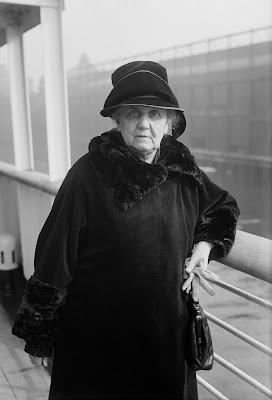Jane Addams established the first playground in Chicago for the Hull House in 1895. The Chicago Tribune called it “a jolly romp.”
 |
| Hull House playground in 1895. |
 |
| Hull House playground in 1895. |
They also regarded green spaces as necessary quiet refuges for adults bombarded with the noise and clamor of city life. Debates over the relative utility of contemplative versus recreational space, a recurring theme in park planning, were settled in 1904 by a compromise design of small parks which encompassed playgrounds and sports fields accompanied by landscaped areas for adults.
On the South Side, park commissioners added an additional innovation, which provided a focal element to many parks: the fieldhouse, designed as a year-round neighborhood center.
 |
| Swimmers at Davis Park, Chicago. Circa 1905. |
Organized park activity reflected both the turn-of-century concern with competition and strenuous exercise and a reform agenda to shape urban culture. Park personnel arranged gymnastics, athletic leagues, and other types of sports competitively, with strict rules. Recognizing the role ethnic culture played in the lives of working-class immigrants, parks reformers arranged for ethnic art, folk singing, and dancing. They also, however, scheduled plays, dances, and movies of a decidedly American flavor. During World War I, park commissioners turned the parks over to the YMCA for Americanization classes; more than one million Chicagoans attended these sessions.
The original concept of the neighborhood park called for meeting halls in which community issues could be discussed, an unintended harkening back to a free-speech tradition established in Chicago's oldest extant small park. Washington Square Park, established in the 1840s, was the site of an immigrant gathering preliminary to the 1855 Lager Beer Riot. The parks continued to provide focal points for neighborhood organizations and activities. During World War I some accommodated labor union rallies. Although park commissioners subsequently prohibited such meetings, parks in working-class districts remained the hub of community activity. In the 1930s, Davis Square became the first headquarters of the Back of the Yards Neighborhood Council.
After World War II the small parks fell into decline. Other types of recreation attracted city residents, parks became less important to reformers, and the Chicago Park District saw itself as a provider of athletic leagues and other kinds of recreational services generally more appropriate to larger facilities. Politics and racism became increasingly visible, as the Park District remained a haven for patronage and parks became valued ethnic turf and therefore sites of racial clashes. Increased gang activity and violence rendered some parks unsafe.
In the late 1980s the Chicago Park District began to revitalize the system, trying to return some of the parks to their original architectural and landscape designs. Neighborhood residents demanded more say in park programs and policies, challenging centralized park authority. The Park District assisted the formation of community advisory councils which were given considerable input into playground rehabilitation. The problem of gangs, however, continued to cripple some parts of the system. While the fieldhouses offered programs, street gangs controlled the streets leading to them.
 |
| Chippewa Park Fieldhouse, 6748 North Sacramento Avenue, in the West Ridge community, West Rogers Park neighborhood of Chicago, Illinois. |
Compiled by Neil Gale, Ph.D.









